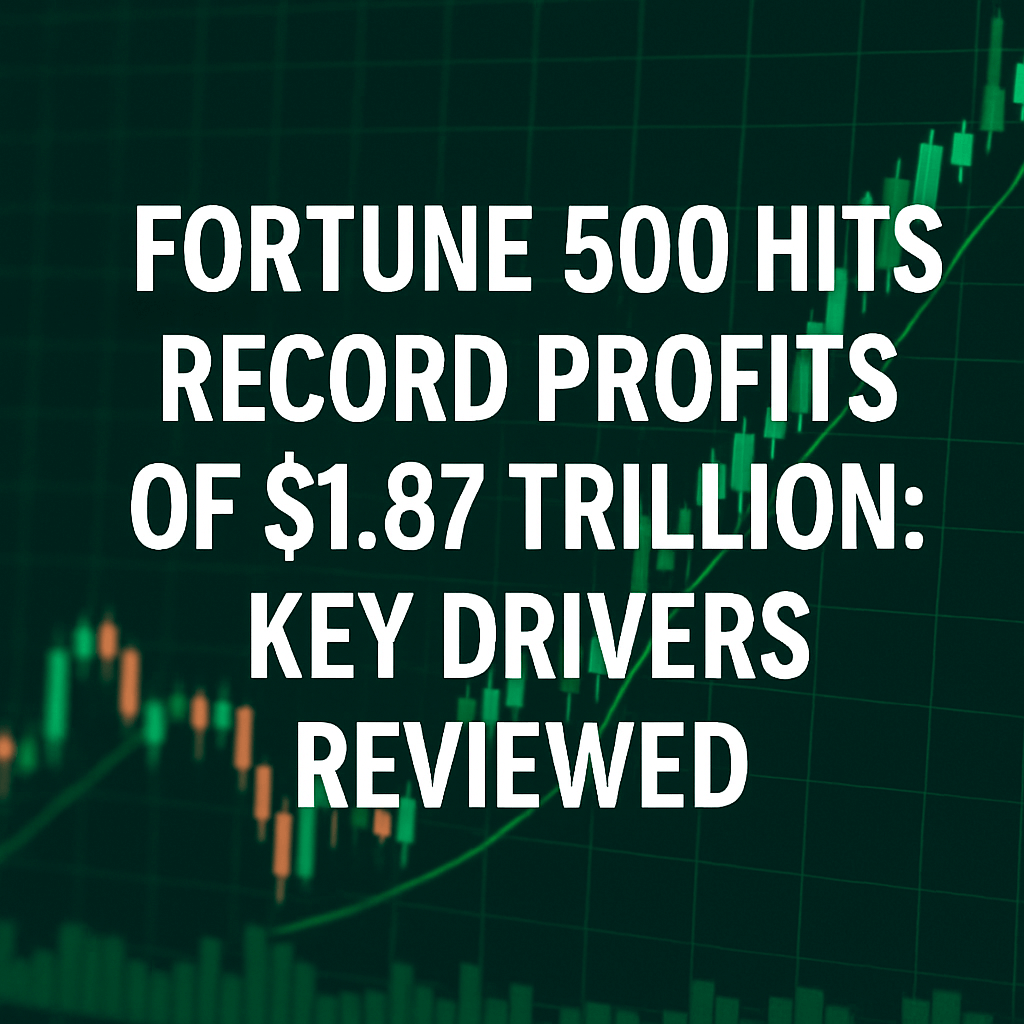Fortune 500 Hits Record Profits of $1.87 Trillion: Key Drivers Reviewed

The largest corporations in the United States have reported one of the most lucrative years on record, with the Fortune 500 collectively posting an astounding $1.87 trillion in profits. This figure represents the highest earnings in the history of the list, when considered in nominal dollars. For context, when adjusted for inflation, the results from the class of 2022 show a slight advantage.
If one were to compare this year’s earnings to those from 1955, the inaugural year for the Fortune 500, the surge in profitability is astonishing. In 1955, the combined profits of the 500 companies amounted to merely $8.3 billion, equivalent to approximately $96 billion today, when adjusted for inflation. In stark contrast, the most profitable company this year, Alphabet Inc., achieved earnings exceeding $100 billion individually.
Context of Profitable Growth
While it might be tempting to declare that the average company on the list is now significantly more profitable than it was seven decades ago, this is not entirely accurate. Historically, the combined profit margin for the Fortune 500 has oscillated between 5% and 7% of revenue over the past 71 years.
However, the landscape has experienced notable transformations in the last thirty years. The two major shifts influencing these unprecedented profits are scale and the preeminence of ‘asset-light’ industries.
Scale of Operations
Firstly, the scale of these enterprises has grown tremendously. The Fortune 500 now generates 12.5 times the revenue it did in 1955, even when accounting for inflation. This remarkable scale translates to higher revenues, which inevitably leads to increased profits. For instance, in the latest fiscal year, the top revenue-generating sectors included technology, finance, and healthcare, contributing significantly to the overall stability and growth of the Fortune 500.
The Rise of Asset-Light Industries
Another critical factor driving these profits is the ascent of asset-light companies, particularly within the technology and financial sectors. These sectors boast profit margins significantly higher than traditional industries, often exceeding 30% per dollar of revenue. In 2022, these tech and finance giants collectively accounted for over 53% of the total profits reported by the Fortune 500. This shift towards asset-light businesses reflects broader market dynamics in which companies leverage technology to optimize operations while minimizing physical infrastructure costs.
“The restructuring of industries allows for greater agility and profit maximization, positioning asset-light companies at the forefront of profitability trends,” noted Margaret Chen, a financial analyst with investment firm Alpha Strategies.
Sector-Specific Insights
The tech sector, represented prominently by Alphabet, Apple, and Amazon, continues to lead profit growth. Their business models heavily depend on data-centric services, software development, and e-commerce, which have shown resilience even amidst global economic fluctuations. Reports indicate that these companies are channeling profits into further innovation, enhancing product offerings, and developing Artificial Intelligence (AI) capabilities that appear to be vital in capturing future market opportunities.
In finance, firms like JP Morgan Chase and Goldman Sachs have capitalized on increased demand for investment services and credit, further elevating their profitability despite economic headwinds. These institutions have embraced fintech developments to streamline services, thereby pushing margins upwards.
Concluding Perspectives
As we analyze the record profits of the Fortune 500, several important factors are at play. Increased scale, a shift towards asset-light business models, and sector-specific opportunities greatly influence overall company profitability. Looking ahead, these trends underscore the importance of adaptability and technological integration in maintaining competitive advantages in an evolving business landscape.
For more detailed insights on corporate profitability and to explore data visualizations reflecting these shifts, continue reading in the June/July 2025 issue of Fortune.
Authors:
Nicolas Rapp – Information Graphics Director, Fortune
Matthew Heimer – Executive Editor, Features, Fortune
Source: fortune